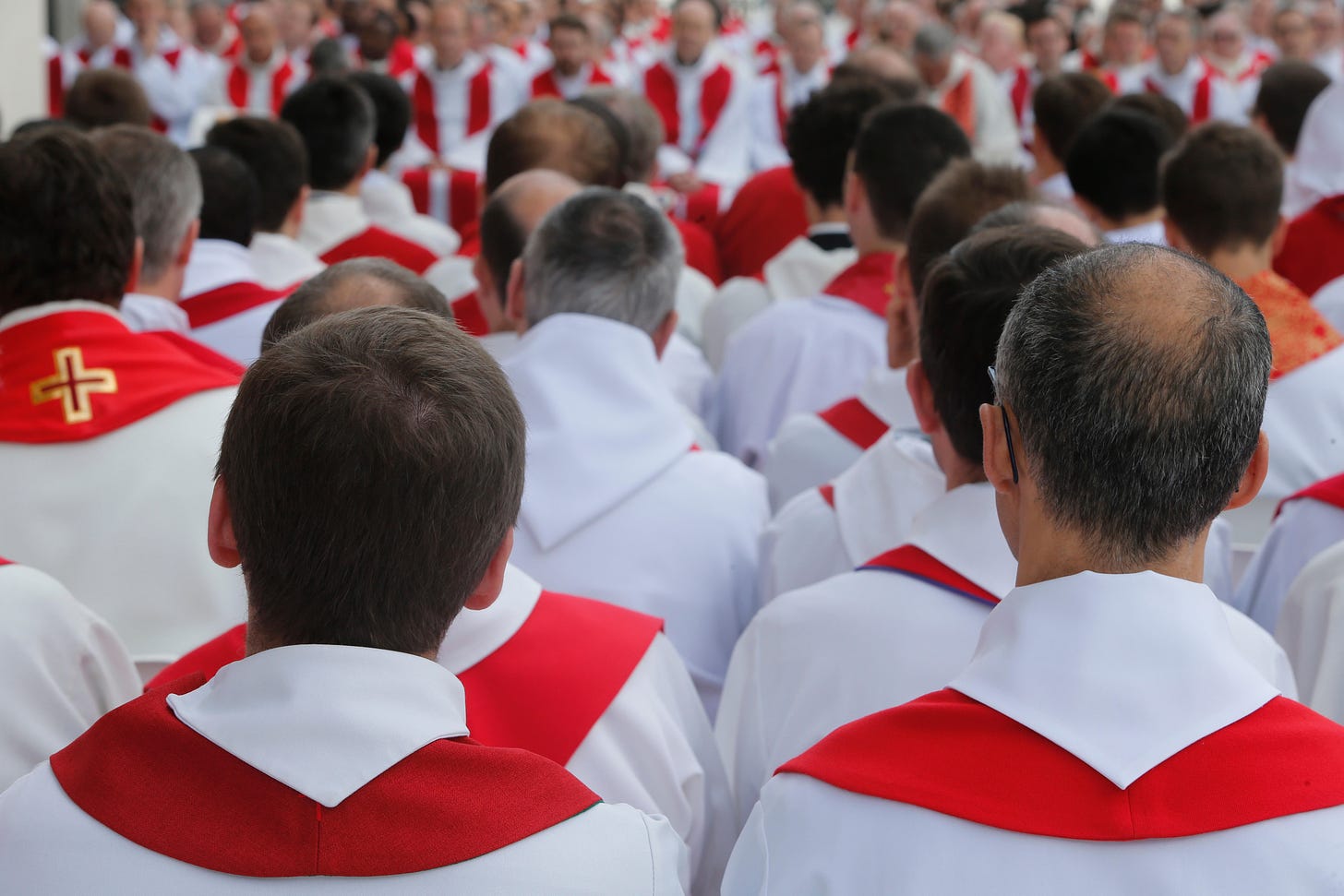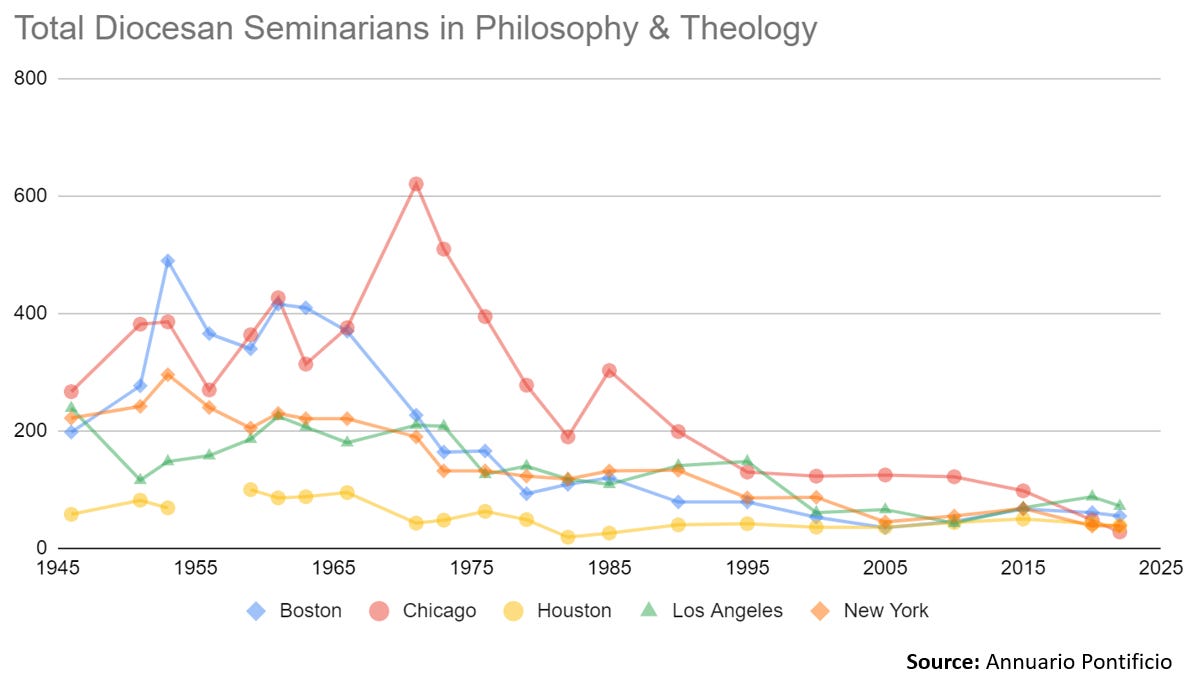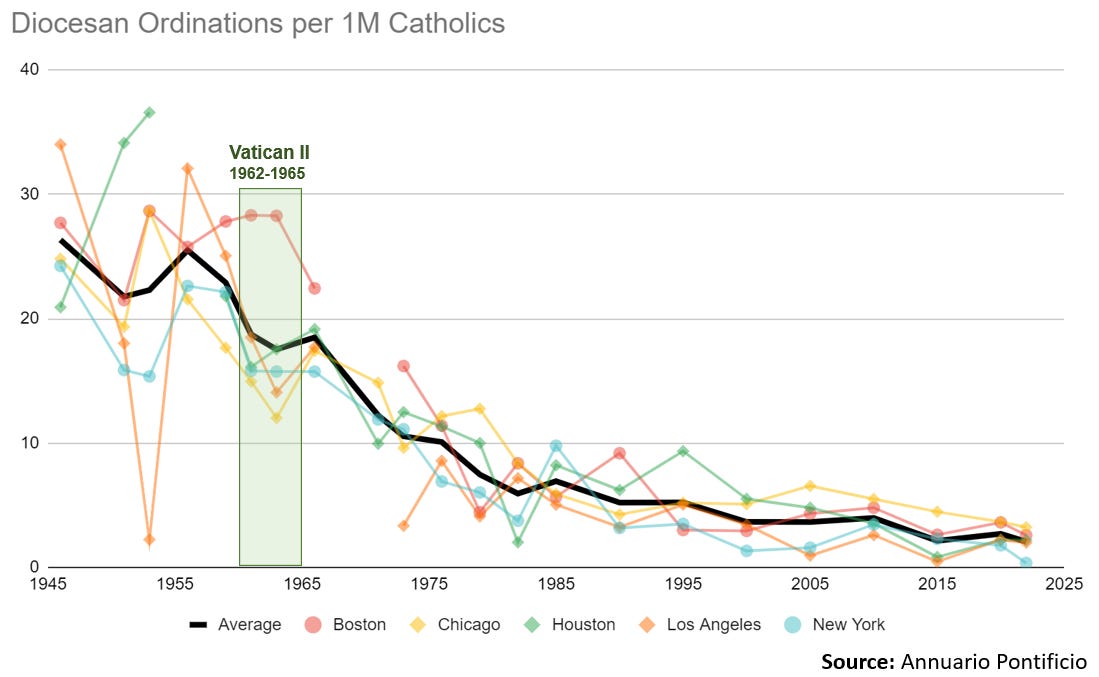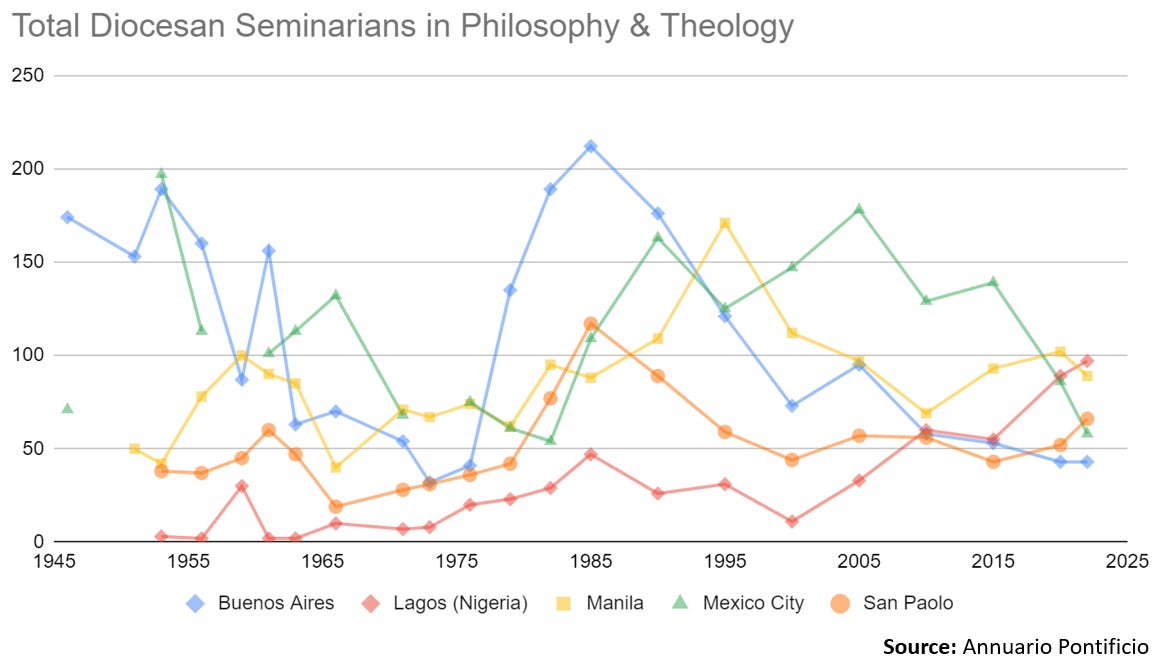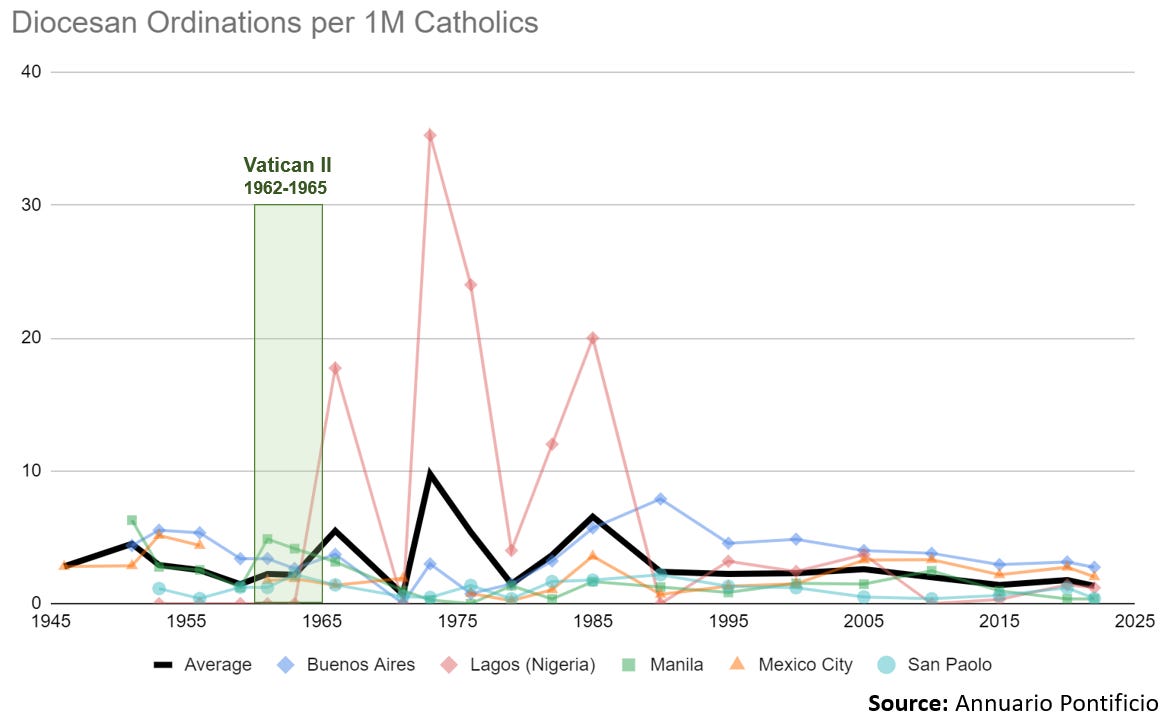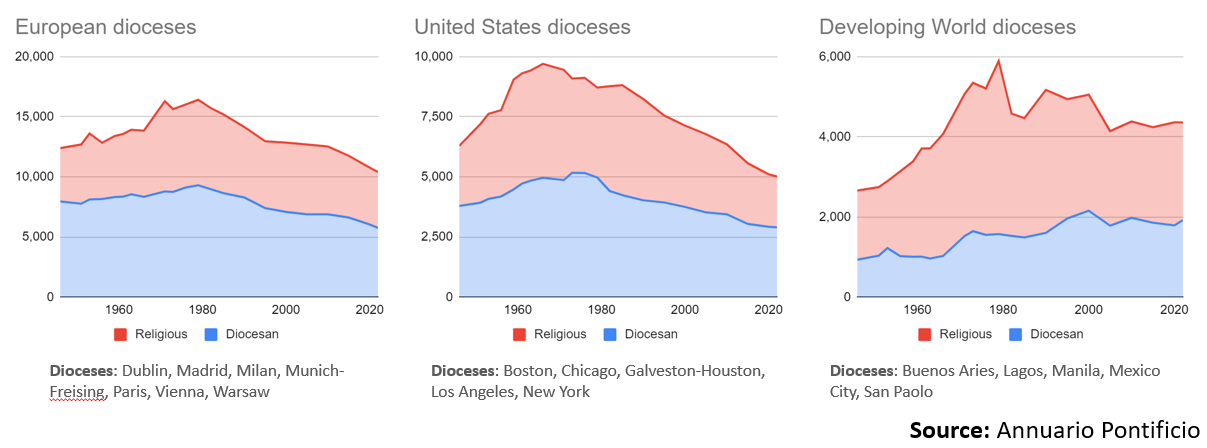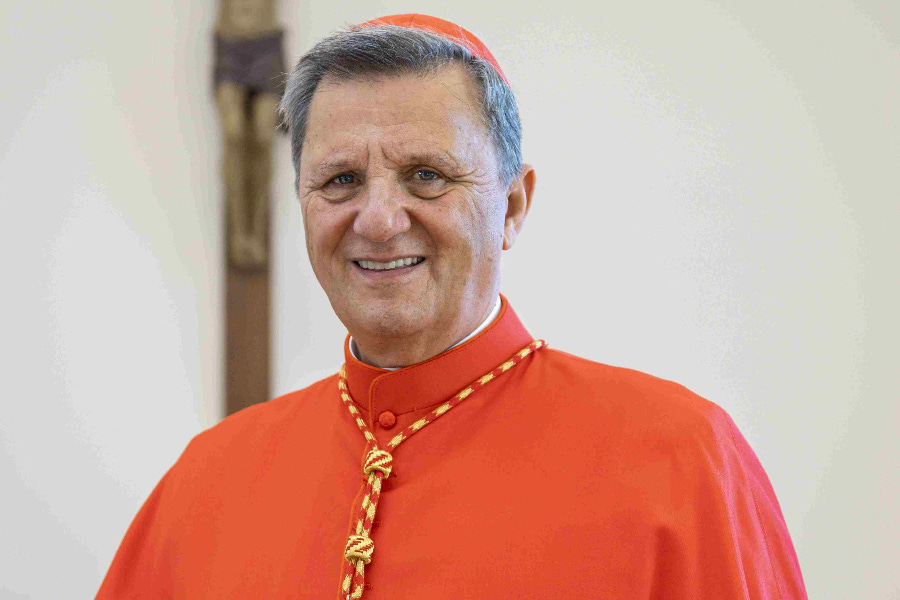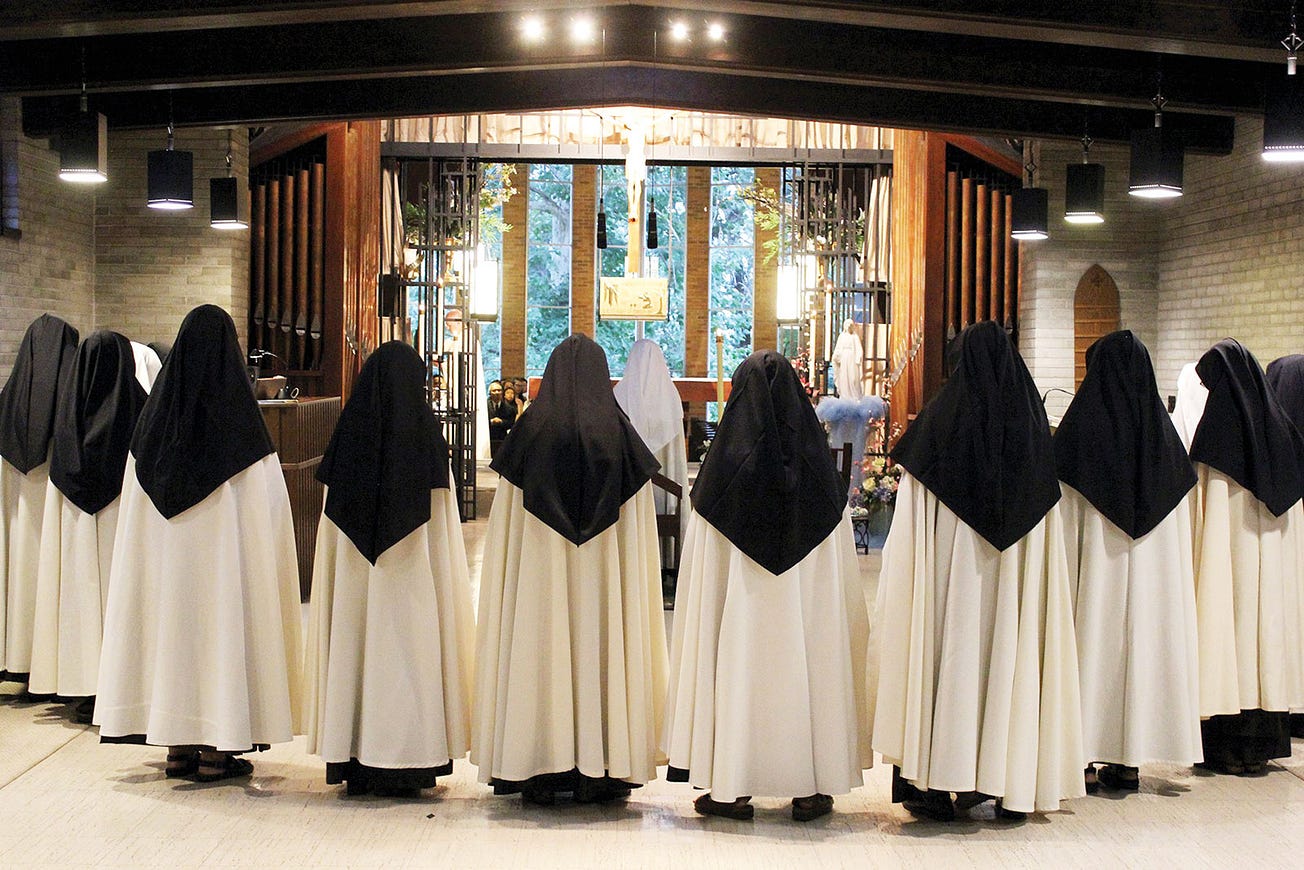It is common in the Church to speak of a “vocations crisis,” and has been for decades. In many U.S. dioceses, more is being asked of a declining number of priests — with parishes increasingly sharing pastors and being merged altogether.
But while it is common in some Catholic circles to point to the Second Vatican Council as a turning point in priestly vocations, data examined by The Pillar suggests a decline in vocations was already underway in the decades before Vatican II began.
In the late 1970s and early 1980s, there was a global decrease in the number of men being ordained to the priesthood. But a look further back suggests a pattern of decrease had begun earlier.
So when did vocations start to decline?
To examine that question, The Pillar collected data on the number of diocesan priestly ordinations per year in 17 major dioceses around the globe from the Annuario Pontificio, an annual directory of the Catholic Church which has been published in various forms since the 1700s.
Since World War II, the Annurio has included basic statistics about each Catholic diocese, including the number of diocesan and religious priests present, the number of seminarians, the number of registered Catholics, and the number of ordinations.
The data from seven major European sees shows that the average number of diocesan ordinations was in decline for at least a decade before the Council.
From the 1950s to 1961, the number of diocesan ordinations in those seven sees decreased by 28% — from an average of 12 annual ordinations per one million Catholics during the 1950s to nine in 1961, the year before Vatican II was called.
More declines in vocations followed the Second Vatican Council: The number of priests ordained per million Catholics declining another 50% in those seven sees in the two decades following Vatican II.
Since that time, the number of vocations has generally stabilized in these European dioceses, although some (such as Dublin and Munich-Freising) have seen more declines and others (Warsaw) have seen increases.
The numbers
As the bishops of European dioceses prepared to attend the first session of Vatican II in 1962, they would have looked at a world which not only had seen two world wars and a tense nuclear stand-off between western nations and the communist bloc, but also at a situation within the Church where four out of the seven major European dioceses we examined had fewer seminarians in formation in 1959 than they had in 1951.
The situation for bishops in the major dioceses of the United States was similar. The most established dioceses, Boston and New York, saw their number of seminarians peak in 1953 and then begin to decline.
Chicago and Los Angeles, further west, had growing numbers of seminarians into the 1960s. Galveston-Houson was not yet among the country’s largest dioceses, but had 100 seminarians in formation in 1959. Bishop Wendelin Joseph Nold could not have known it was the largest number the diocese would have for the next sixty years, even as the Catholic population would increase by nearly five times.
Indeed, the major difference between the situation in Europe and America was that the Catholic population in the European dioceses we analyzed was the same in 2020 as it had been in 1956, while in the five US dioceses we examined the population increased by 120% during the same time period.
Although the total number of diocesan priests ordained in the United States has consistently averaged 430 per year since 1990, the number of Catholics registered in US parishes has increased from 56 million to 67 million during that same time period.
Analyzing the number of diocesan ordinations per million registered Catholics in the five major US dioceses for which we collected data, the trend that emerges is of a Church in which vocations were already decreasing in the decade before the Council, but which dropped far more rapidly in the 25 years afterwards.
Although the decline has been more gradual in the last 30 years, the number of diocesan ordinations per million Catholics in those five dioceses has still declined from 5.2 in 1990 to 2.1 in 2022.
The Pillar also collected data for five large dioceses in the developing world. The number of Catholics in Manila, San Paolo, Mexico City, Buenos Aires, and Lagos, Nigeria, has increased significantly over the 76 years for which we collected data.
Many of those dioceses have also lost territory (and with it priests and registered Catholics) as additional dioceses were erected to serve the growing population. For instance, the Archdiocese of Mexico City saw eight new dioceses carved from its territory between 1950 and 2019.
But even in dioceses across the developing world, there was a decreasing number of diocesan seminarians in the years leading up to the council, before a low point in the late 1960s and early 1970s when there were far fewer men in formation.
Starting in 1975, the number of seminarians began to increase in all five dioceses. Buenos Aires and Mexico City have seen decreases in recent years, while Lagos has seen consistent growth in seminarians over the last 20 years.
Although the total number of seminarians in the developing world has increased, the Catholic population has increased rapidly as well. During the 1950s there were 2.9 diocesan ordinations for every million registered Catholics in these five dioceses. Since 2010, the average has been 1.6.
Diocesan and religious priests
The data shows that the share of priests ordained as members of religious communities has fluctated - growing in some parts of the world, and declining in others
Although the Annuario provides some data on the number of religious priests who are ordained within a diocese, not all dioceses reported the data consistently, so it is difficult to track ordination trends in religious orders as compared to diocesan priests.
Among the seven dioceses we analyzed in Europe, the percentage of total priests present in the diocese who are religious, rather than diocesan, has increased from 38% in the 1950s to 44% since 2010.
In the five United States dioceses in our data set, the share of religious priests decreased from 48% in the 1950s to 44% since 2021.
In the five dioceses studied in the developing world, the share of religious priests decreased from 64% to 56% during the same time period.
Across regions and dioceses, the data we examined suggests that vocations were already declining in many dioceses prior to Vatican Council II.
This trend, in the face of an increasingly secular world, was doubtless one of those which many hoped the Council would help to resolve. Nevertheless, the immediate post-conciliar period did see an even greater decline in the number of men ordained to the priesthood.
Since the 1970s and 1980s, the trend in vocations has largely stabilized. However, in parts of the world where the number of Catholics is continuing to grow, the growth in ordinations has not kept pace with the increase in the Catholic population.
While Catholics often speak of the Church as returning to a “missionary mode” in an increasingly secular world, these trends suggest that the Church will have to battle serious constraints imposed by the relatively fewer number of priests available to minister to a large and growing number of lay Catholics.

